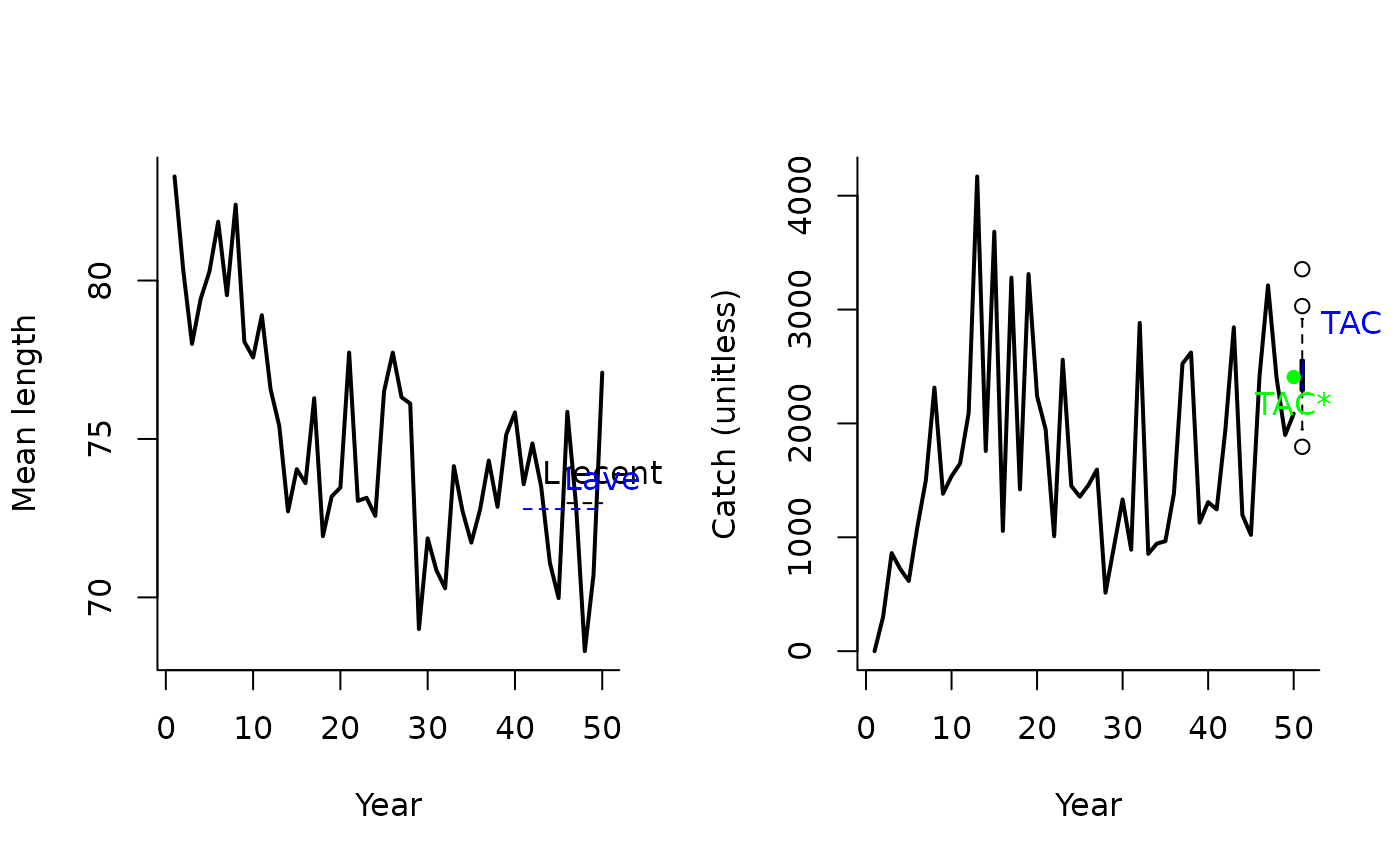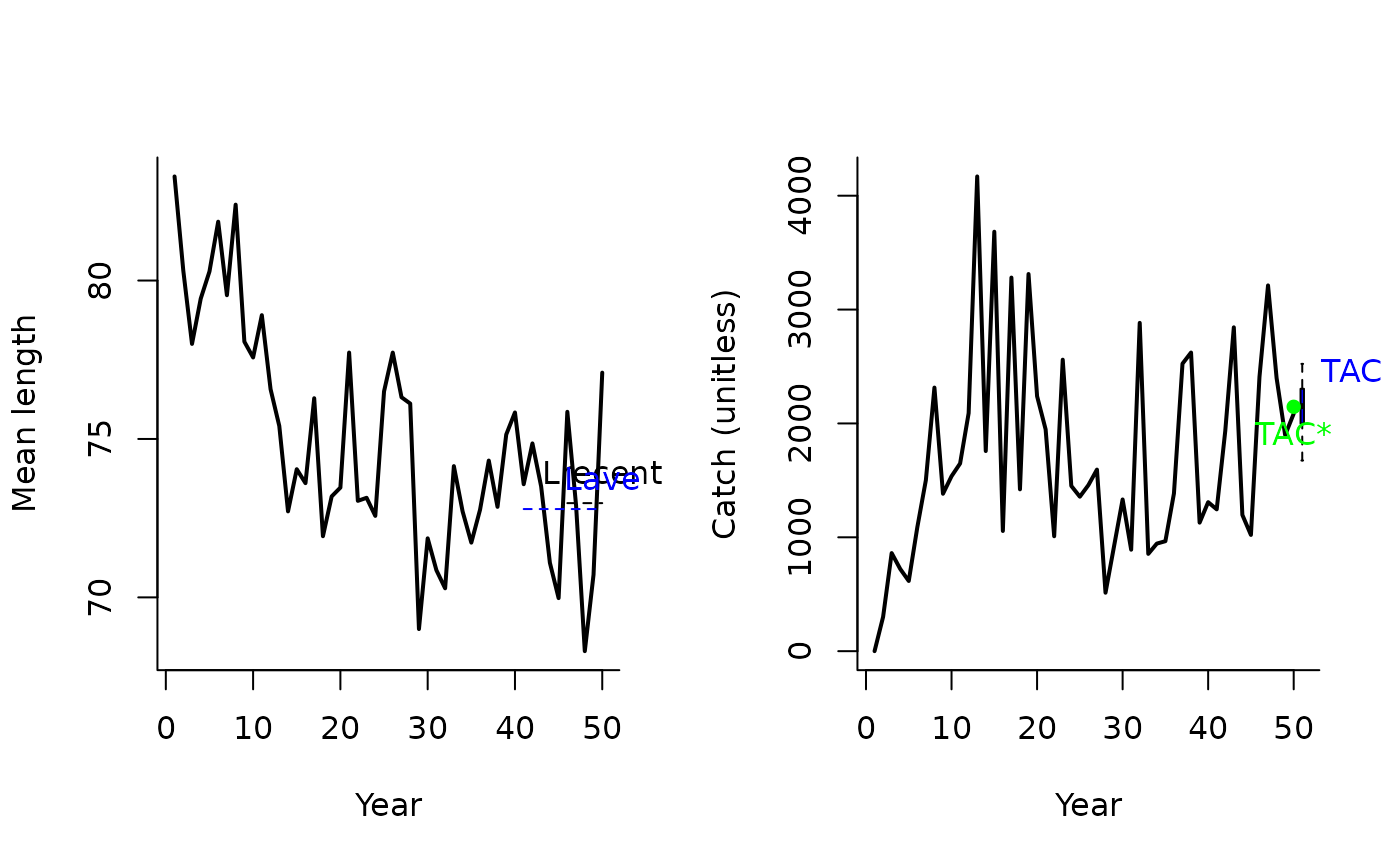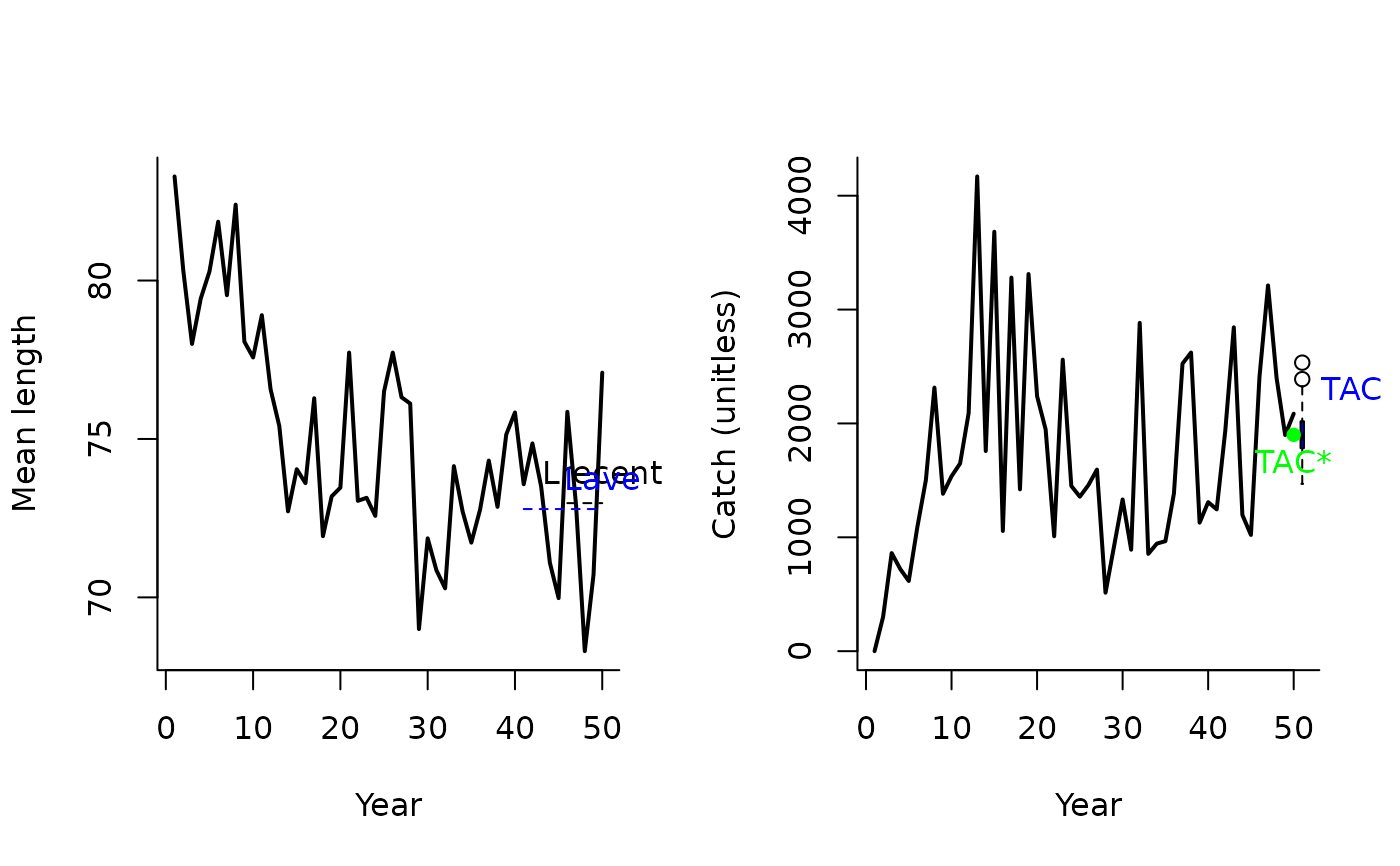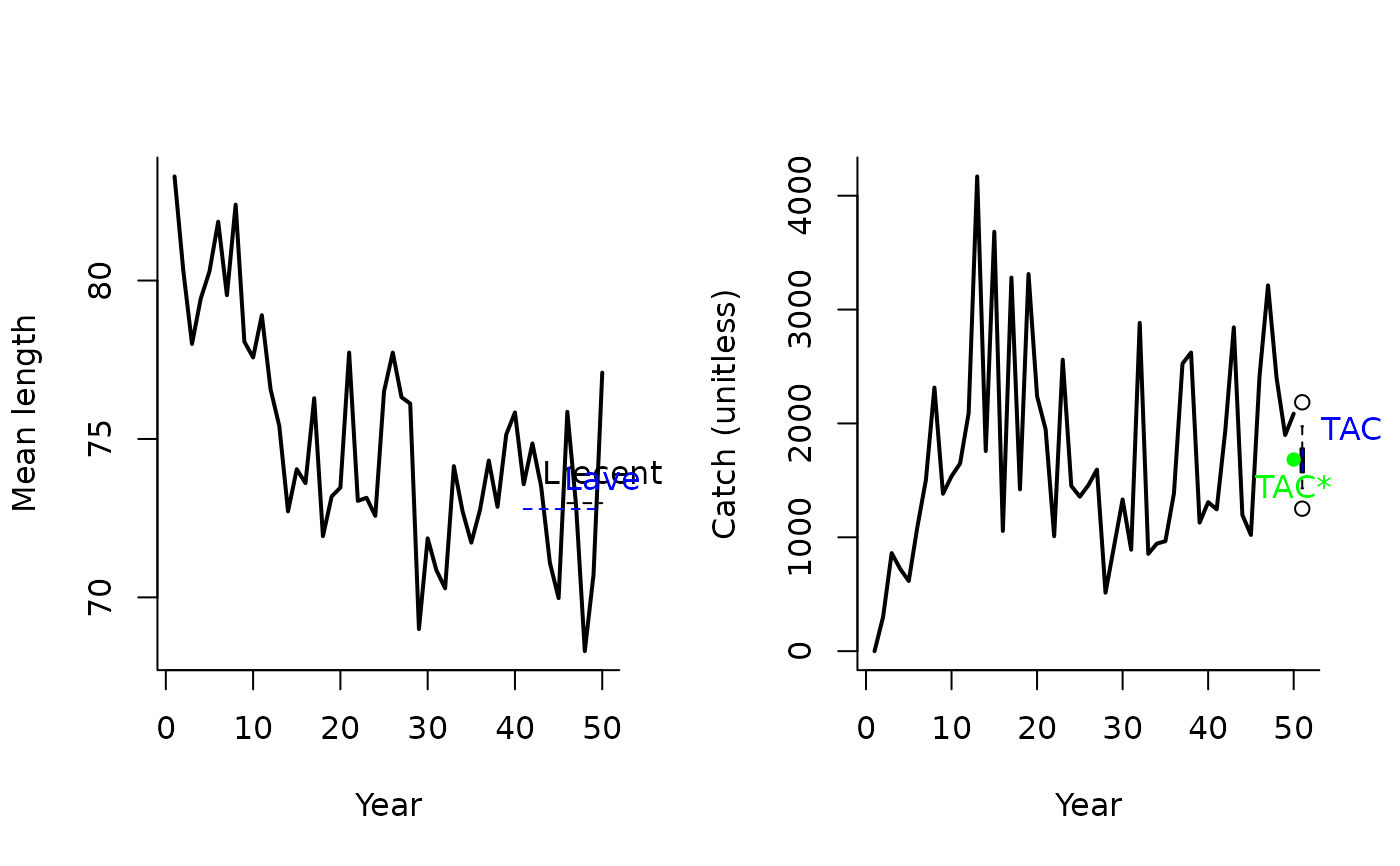
Step-wise Constant Catch
LstepCC1.RdA management procedure that incrementally adjusts the TAC according to the mean length of recent catches.
Usage
LstepCC1(
x,
Data,
reps = 100,
plot = FALSE,
yrsmth = 5,
xx = 0,
stepsz = 0.05,
llim = c(0.96, 0.98, 1.05)
)
LstepCC2(
x,
Data,
reps = 100,
plot = FALSE,
yrsmth = 5,
xx = 0.1,
stepsz = 0.05,
llim = c(0.96, 0.98, 1.05)
)
LstepCC3(
x,
Data,
reps = 100,
plot = FALSE,
yrsmth = 5,
xx = 0.2,
stepsz = 0.05,
llim = c(0.96, 0.98, 1.05)
)
LstepCC4(
x,
Data,
reps = 100,
plot = FALSE,
yrsmth = 5,
xx = 0.3,
stepsz = 0.05,
llim = c(0.96, 0.98, 1.05)
)Arguments
- x
A position in the data object
- Data
A data object
- reps
The number of stochastic samples of the MP recommendation(s)
- plot
Logical. Show the plot?
- yrsmth
Years over which to calculate mean length.
- xx
Parameter controlling the fraction of mean catch to start using in first year
- stepsz
Parameter controlling the size of update increment in TAC or effort.
- llim
A vector of length reference points that determine the conditions for increasing, maintaining or reducing the TAC or effort.
Value
An object of class Rec-class with the TAC slot populated with a numeric vector of length reps
Details
The TAC is calculated as:
$$\textrm{TAC} =
\left\{\begin{array}{ll}
\textrm{TAC}^* - 2 S\textrm{TAC}^* & \textrm{if } r < 0.96 \\
\textrm{TAC}^* - S \textrm{TAC}^* & \textrm{if } r < 0.98 \\
\textrm{TAC}^* & \textrm{if } > 1.058 \\
\end{array}\right.
$$
where \(\textrm{TAC}^*\) is (1-xx) times average catch in the first year,
and previous catch in all projection years, \(S\) is step-size determined by stepsz,
and \(r\) is the ratio of \(L_\textrm{recent}\) and \(L_\textrm{ave}\)
which are mean length over the most recent yrsmth years and 2 x yrsmth historical
years respectively.
The conditions are specified in the llim argument to the function.
Functions
LstepCC1: The least biologically precautionary TAC-based MP.LstepCC2: More biologically precautionary thanLstepCC1(xx= 0.1)LstepCC3: More biologically precautionary thanLstepCC2(xx= 0.2)LstepCC4: The most precautionary TAC-based MP.
Required Data
See Data-class for information on the Data object
LstepCC1: Cat, LHYear, ML, Year
LstepCC2: Cat, LHYear, ML, Year
LstepCC3: Cat, LHYear, ML, Year
LstepCC4: Cat, LHYear, ML, Year
Rendered Equations
See Online Documentation for correctly rendered equations
References
Carruthers et al. 2015. Performance evaluation of simple management procedures. ICES J. Mar Sci. 73, 464-482.
Geromont, H.F., Butterworth, D.S. 2014. Generic management procedures for data-poor fisheries; forecasting with few data. ICES J. Mar. Sci. doi:10.1093/icesjms/fst232
Examples
LstepCC1(1, Data=MSEtool::SimulatedData, plot=TRUE)
 #> TAC (median)
#> 2378.001
LstepCC2(1, Data=MSEtool::SimulatedData, plot=TRUE)
#> TAC (median)
#> 2378.001
LstepCC2(1, Data=MSEtool::SimulatedData, plot=TRUE)
 #> TAC (median)
#> 2151.918
LstepCC3(1, Data=MSEtool::SimulatedData, plot=TRUE)
#> TAC (median)
#> 2151.918
LstepCC3(1, Data=MSEtool::SimulatedData, plot=TRUE)
 #> TAC (median)
#> 1883.772
LstepCC4(1, Data=MSEtool::SimulatedData, plot=TRUE)
#> TAC (median)
#> 1883.772
LstepCC4(1, Data=MSEtool::SimulatedData, plot=TRUE)
 #> TAC (median)
#> 1680.32
#> TAC (median)
#> 1680.32